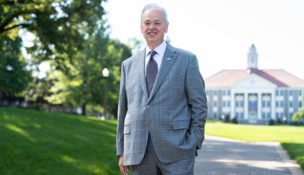Virginia private colleges adopt innovative retirement plan
Fourteen Virginia private colleges are collaborating on an innovative employee retirement plan that is believed to be the first of its kind in the nation.
The schools expect the move to reduce their administrative burdens and cut costs while helping employees prepare for retirement.
The schools are members of the Council of Independent Colleges in Virginia (CICV), an umbrella organization representing 28 private, nonprofit institutions.
A CICV committee has been working for more than five years on the project, known as a 403(b) Multiple Employer Plan (MEP).
An MEP is offered by a group of employers that operate in a similar field but are separately owned.
Like the 401(k) defined-contribution retirement plans used by for-profit companies, 403(b) refers to the section of the federal tax code outlining such plans for nonprofit employers.
Pete D’Angio, national director for not-profit-markets with Pentegra Retirement Services, a vendor for the CICV plan, says it represents “a significant event in my industry” that will be closely watched by other colleges. (Colleges in Wisconsin are finalizing an MEP plan.)
The plan is “the first higher-education plan of its kind,” D’Angio says, predicting that five to 10 similar plans likely will be established in the next five years.
CICV “built the playbook, and it’s an effective playbook,” he says.
One of the reasons for high interest in the CICV plan is the increasing oversight responsibilities for 403(b) plans that colleges have faced over the past decade.
Many schools have had to add administrative staff to handle oversight issues.
One of CICV’s roles is to help its members work collaboratively to gain access to resources and reduce costs.
“There are many things that each individual college has to do on its own, but we’re finding increasingly that when colleges come together and pool their resources, we get a better result,” says Robert Lambeth, CICV’s president.
He notes that CICV created a self-insured health insurance consortium a decade ago that is now used by 16 of its members.
That experience, Lambeth says, gave college officials the confidence to investigate the creation of an MEP. “We quickly realized that it had never been done in the nonprofit world,” he says.
Lambeth says a CICV committee studied the concept methodically before deciding “that this made a lot of sense both for the benefit of our employees … and for the benefit of colleges.”
Noting that many small colleges have lean administrative staffs, Lambeth says the MEP would allow many retirement plan responsibilities to be handed off to outside firms that had been vetted by CICV.
At the same time, colleges participating in the plan expect it to offer employees a better selection of investment options in addition to more guidance on retirement planning.
Paul Davies, the MEP’s board chair who is vice president of administration and finance at Randolph-Macon College, says that, by combining assets, the plan was able to negotiate reduced fees for employees while giving them individualized counseling, financial planning and access to professional asset-management services.
“We really see this as a win-win across the board. It's accomplished everything we hoped when we set the goals to put this together,” he says.
The MEP will cover more than 9,400 people at the 14 schools.
They include: Appalachian College of Pharmacy, Averett University, Bridgewater College, Edward Via College of Osteopathic Medicine, Emory & Henry College, Ferrum College, Hollins University, Lynchburg College, Mary Baldwin University, Randolph-Macon College, Shenandoah University, Southern Virginia University, Sweet Briar College and Virginia Wesleyan University.
They will join the MEP in phases through the middle of next year. The first three colleges to join are Bridgewater, Ferrum and Mary Baldwin.
Goals for the MEP include:
• A robust education and financial advising program aimed at helping employees meet retirement goals.
• Constant monitoring of investment options and fees.
• Reduction of colleges’ administrative burden, fiduciary liability and cost in managing retirement plans.
• Flexibility that allows each school to tailor the plan to accommodate its needs.
Firms providing services to the MEP include:
• Millennium Advisory Services: employee investment advising and education
• Pentegra Retirement Services: plan administration and compliance
• PRM Consulting Group: RFP (request for proposal) consulting and management
• SageView Advisory Group: plan-level investment advising
• TIAA: recordkeeping
• Troutman Sanders: legal services

















